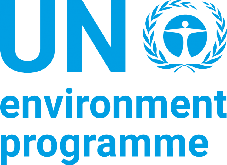Message d'avertissement
Unable to retrieve at this time, please check again later.Every 16 September, World Ozone Day reminds us of the need to protect the ozone – a thin, protective layer of gas that absorbs most of the sun's harmful ultraviolet light. In doing so, the ozone layer helps protect humans from skin cancer and cataracts, and shields plants, crops and ecosystems from damage. The year 2020 marks more than three decades of global efforts to conserve and restore the ozone – which have paid off.
Scientists first raised alarm about the ozone layer in the late 1970s, when they discovered that chemicals were destroying this protective shield. Ozone-depleting gases (ODSs) used in aerosols, refrigerators and air-conditioners were depleting the layer so much that by the mid-1980s a hole was discovered in the layer over the Antarctic.
In response, the world’s governments adopted the Vienna Convention for the Protection of the Ozone Layer in 1985. Under the Convention’s Montreal Protocol, governments, scientists and industry worked together to cut out 99 per cent of all ozone-depleting substances. Thanks to the global effort, the ozone layer is healing and is expected to return to pre-1980 values by mid-century.
“We need this unity of purpose more than ever as we seek to address nature loss, climate change and pollution in the wake of the COVID-19 pandemic,” says UN Environment Programme Executive Director, Inger Andersen.
In 2019 the Kigali Amendment went one step further. It is set to reduce the production and consumption of hydrofluorocarbons (HFCs) -greenhouse gases with powerful climate warming potential- by more than 80 per cent over the next 30 years. It recently achieved over 100 ratifications.
“Reaching 102 ratifications is an incredible milestone and an achievement we should be proud of,” observes the Executive Secretary of the Ozone Secretariat, Tina Birmpili. Adding, “It is crucial, that we maintain this momentum and continue working towards full implementation of the Kigali Amendment if we want to ensure that we take advantage of its benefits.”
“The ozone treaties stand out as inspiring examples that show that, where political will prevails, there is little limit to what we can achieve,” comments UN Secretary-General, António Guterres.
“Let us take encouragement from how we have worked together to preserve the ozone layer and apply the same will to healing the planet and forging a brighter and more equitable future for all humanity.”
For more information visit the World Ozone Day 2020 homepage and try the quiz to test your ozone knowledge.
For any further information please email [email protected].
